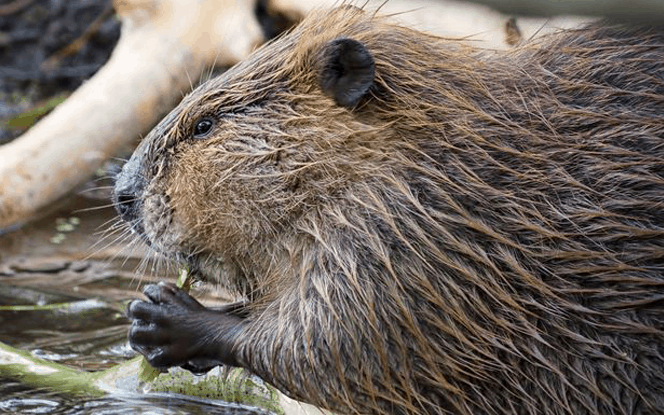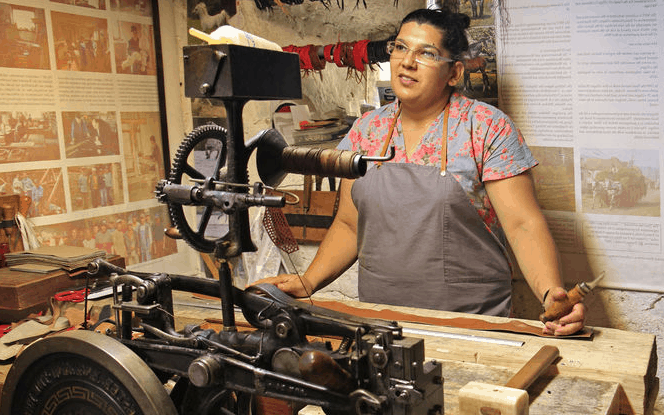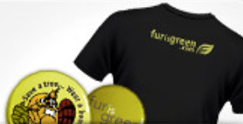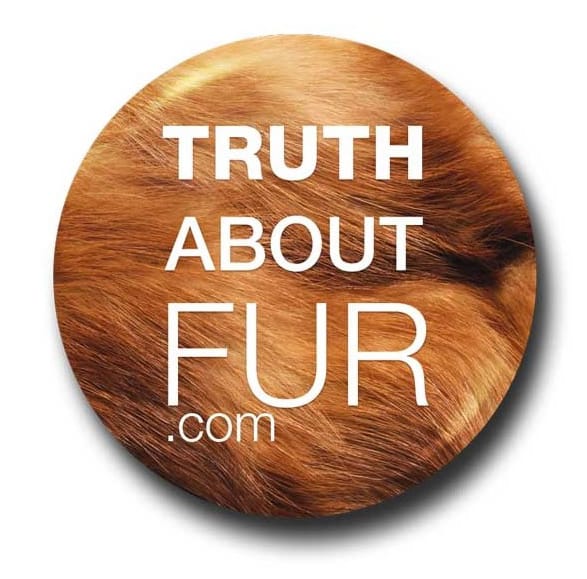For an informed opinion
At a time when we are all trying to be conscious of how our lifestyles affect nature, fur is an excellent choice. Like leather, suede and shearling, fur is a natural product, a true gift of nature…
Question 1: What do you mean by saying "Fur is Green?"
We want people to know that fur is an excellent choice if you care about nature — because fur is a natural, renewable resource. The Canadian fur trade is very well regulated to ensure animal welfare. The furs we use are abundant; never from endangered species. And fur apparel is remarkably long wearing. This is more eco-logical than today’s disturbing trend to “cheap”, disposable fashion – like the tons of unwanted materials (80% non-biodegradable synthetics!) that ends up in landfills. Those who think that synthetics can replace fur should also know that most synthetics are made from petroleum – a non-renewable resource – and their production and disposal can pose environmental problems
Sensationalist and misleading “animal rights” campaigns have created confusion about the true ecological role of the fur trade. It is time to present another side of the fur story
Question 2: How can the use of animal to make a luxury product ever be ethical?
Most of us grew up with wonderful stories of Mama Bear and Baby Bear and we all love Bambi. But Nature is not Disneyland. To ensure the survival of species, most animals produce more young than Nature can support to maturity. These young animals will die of hunger and disease or will be killed by other animals. We can use part of this surplus without reducing wildlife populations. This is called “sustainable use”, a principle now recognized and promoted by all serious conservation organizations. The fur trade (and other wildlife use) also provides a financial incentive to protect the natural habitat of animals. And, even if there were no market for furs, trapping would still be needed in many regions to control the spread of disease (like rabies), to protect property, and to help maintain a balance with available habitat. Trappers are practicing environmentalists in a very real sense!
Fur farms are also environmentally sound: fur animals recycle leftovers from our own food production system (animal parts that we don’t eat, poorer quality dairy products or cereals, etc) to produce valuable products: furs, oils (to protect leather), and natural fertilizers (from composted bedding straw, manure and carcasses).
While fur apparel is relatively expensive (because of the work involved in producing it), we have to remember that most of the 70,000 Canadians in the trade are not wealthy: they are aboriginal and non-aboriginal trappers living in some of the most remote parts of our country; they are people living and working on family farms; they are artisans maintaining wonderful craft skills that have been passed on for generations.
For many trappers and aboriginal communities living far from urban centers, beaver and other wild animals are part of their everyday diet. Whatever they don’t eat is returned to the forest to feed other wildlife. Nothing is wasted.
Question 3: How can I be sure the Canadian fur industry respects humane standards?
Trapping in Canada is strictly regulated by the provincial and territorial wildlife departments. Canada is, in fact, a world leader in the development of new trapping methods. With support from Environment Canada and the International Fur Trade Federation, more than $20 million has been invested in research coordinated by the Fur Institute of Canada. This work provided the scientific basis for the Agreement on International Humane Trapping Standards (AIHTS) adopted by the European Union and the main wild fur-producing regions (Canada, USA, Russia). Trappers cannot receive their trapping licenses until they have taken special courses to learn the most up-to-date and humane methods.
Fur farming, like all agriculture, is regulated by the provincial agriculture departments. Canadian mink and fox farmers have adopted Recommended Codes of Practice, developed by Agriculture Canada in cooperation with the Canadian Federation of Humane Societies (CFHS) and farm groups. Farmers have every reason to follow these codes since only well-cared for animals can produce the high quality fur required to compete in international markets. Farmers who don’t provide excellent housing, nutrition and care to their animals will not remain in business for long!
Question 4: Are those videos going around for real?
Unfortunately there are many documented incidents of activist groups “staging” horrible videos to fuel their fund-raising drives. They do this because the stakes are high! Animal activist groups now rake in millions of dollars with sensationalized, media-driven campaigns. (www.activistcash.com)
One of the most gruesome and offensive videos now circulating shows Asiatic raccoons in a Chinese village being, literally, skinned while still alive. The question is why anyone would do something so cruel…unless they were paid to produce a shocking video? Apart from the obvious cruelty, skinning a moving animal, increases the risk of damaging the pelt or harming the operator; diseases and infections can be transmitted by knife nicks or cuts. Furthermore, living animals (their hearts still beating) bleed more, which would unnecessarily dirty and damage the pelt. Would a pelt stained with blood and cut haphazardly while an animal wiggles be of any value?
Other videos show animals suffering on fur farms. But it is impossible to produce high-quality fur unless animals are raised in good living conditions, with a balanced diet, a clean pen and excellent care. Are we expected to believe that this is common practice when it doesn’t make any business sense?
Question 5: Are coats in Canada made from dog & cat fur?
Animal activists often make this claim to discredit the fur trade — but they have yet to find a single dog or cat fur garment in Canada.
The Fur Council of Canada has adopted a formal policy confirming that Canadian fur manufacturers and retailers do NOT use domesticated dog and cat fur in the garments they produce or sell. Why would they? Canadian consumers are not interested in such products, and we have so many beautiful Canadian furs to choose from!
Garments sold in reputable fur stores always carry a label indicating the fur type. When in doubt, consult your fur retailer.
Sometimes activists claim that “raccoon dogs” are dogs, because they are classified by biologists in the larger canidae family. But Nyctereutes procyonoides is really a completely distinct species that resembles a North American raccoon much more than it does a coyote, wolf or other members of the dog family. This Asiatic raccoon is native to Asia and is also farmed in Scandinavia where they are known as Finn Raccoons.It is true that in some countries dogs (and other animals we think of as pets) are used for human consumption. For us Westerners this is unthinkable. But who are we to impose the values of our rich and well-fed societies on developing nations with different customs? (And, of course, we also kill millions of unwanted dogs and cats each year; are we morally superior because we are rich enough to throw them away unused?)
Question 6: Who are the animal activist groups and what do they really want?
The most prominent of these organizations, PETA & HSUS, would like you to believe that they are ‘’charitable’’ organizations, raising funds to protect animals. They really function more like well-oiled propaganda and fundraising machines investing millions in media campaigns, paying handsome salaries to their executives and spending very little on animal shelters. (see: www.petakillsanimals.com). They often use extremist (and sometimes terrorist-like) tactics to get media attention and influence public opinion. They seek to abolish ALL use of animals, even for food or vital medical research. They oppose using leather, honey or seeing-eye dogs. They believe that keeping pets is a form of “slavery”.
They see fur as an easy target because it is perceived to be relatively expensive and glamorous — and therefore can be caricatured as a “frivolous” luxury for a small group of rich people. In reality the fur industry is made up of very small family-run businesses, artisans, trappers and farmers who are not media-savvy like PETA or the HSUS, and don’t have the financial means to compete with the multi-million dollar budgets of the lucrative new “protest industry’’.
While it is totally legitimate to have differing personal views on the use of animals, whether in our diets or for the clothes we wear, is it really fair to single out one industry and attack the livelihoods of thousands of people, who, like everybody else, have families to raise and bills to pay? Is it really fair to attack the fur industry in a society where 97% of the population eats meat and uses animal products everyday?










